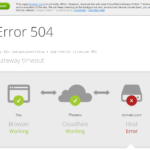You’ve undoubtedly heard of ClamAV, a potent open-source antivirus program, if you use Ubuntu and want to protect your system from malware. The first step in using this dependable program to secure your system is learning how to download ClamAV for Ubuntu. I’ll walk you through the download, installation, and configuration of ClamAV on your Ubuntu computer in this easy-to-follow tutorial. This post will make the process simple and stress-free, regardless of your level of Linux experience. Let’s get started and secure your system!
What is ClamAV?
ClamAV is an open-source, free antivirus engine that can identify malware, trojans, viruses, and other harmful threats. Because it’s lightweight, adaptable, and works well with a variety of systems, Linux users especially like it. ClamAV is a reliable tool for maintaining the security of your Ubuntu system, whether you’re scanning files, emails, or entire directories. Additionally, it is updated frequently with the most recent virus definitions, guaranteeing strong protection.
Why Choose ClamAV for Ubuntu?
Let’s discuss why ClamAV is a fantastic option for Ubuntu users before getting into the specifics of downloading and setting it up. First of all, it is open-source, which means that a developer community supports it and it is free to use. Second, you can schedule or run scans whenever you want thanks to its great degree of customization. Lastly, ClamAV won’t slow down your system because it is lightweight. ClamAV is a good choice for security whether you’re running Ubuntu on a server or a personal laptop.
Prerequisites for Installing ClamAV on Ubuntu
Before you start, ensure you have the following:
An Ubuntu system (this guide is compatible with Ubuntu 20.04, 22.04, or later).
Ensure you have a stable internet connection to download the necessary packages.
Basic familiarity with the terminal (don’t worry, I’ll keep the commands simple!).
You will require sudo access for administrative privileges.
Ready? Let’s get started with the steps to download and install ClamAV on Ubuntu.
Step 1: Update Your Ubuntu System
Updating your system’s package list is always a beneficial idea before installing any new software. By doing this, you can be sure that the ClamAV and its dependencies are up to date. Press Ctrl + Alt + T to open your terminal, then type the following commands:
sudo apt update
sudo apt upgrade -yThe sudo apt update command refreshes the package list, while sudo apt upgrade -y installs any available updates. The -y flag automatically confirms the installation, saving you a few clicks.
Step 2: Download and Install ClamAV
Let’s download ClamAV now. The good news is that you can use the apt package manager to install ClamAV directly because it is present in Ubuntu’s default repositories. Enter the following in your terminal:
sudo apt install clamav clamav-daemon -yHere’s what this command does:
clamav installs the main ClamAV antivirus software.
The clamav-daemon package installs the ClamAV daemon, which enables automatic scanning and provides real-time protection.
The -y flag confirms the installation without prompting.
This command will download and install ClamAV along with its dependencies. Depending on your internet speed, this may take a few minutes.
Step 3: Update ClamAV Virus Definitions
In order to identify threats, ClamAV uses virus definitions, which must be updated on a regular basis. To make sure ClamAV is prepared to defend your system, you should update the virus database after installation. Execute the subsequent command:
sudo freshclamThe freshclam command connects to the ClamAV servers and downloads the latest virus definitions. If you encounter any errors (like a permissions issue), you may need to stop the ClamAV daemon temporarily. Use these commands:
sudo systemctl stop clamav-freshclam
sudo freshclam
sudo systemctl start clamav-freshclamThis procedure ensures the virus definitions are updated and the daemon is running again.
Step 4: Verify the Installation
Run the following command to verify the correct installation of ClamAV:
clamscan --versionThis command will display the installed version of ClamAV, confirming that the software is ready to use. If you see a version number, congratulations—you’ve successfully installed ClamAV!
Step 5: Running Your First Scan
Now that ClamAV is installed and updated, let’s try a basic scan to test it out. To scan your home directory, run:
clamscan -r /home/$USERHere’s what this command does:
-r tells ClamAV to scan recursively, checking all files and subdirectories.
/home/$USER specifies your home directory (the $USER variable automatically uses your username).
This scan may take some time, depending on the number of files in your home directory. Once complete, ClamAV will display a summary of the scan, including any threats found.
For a more thorough scan, you can scan the entire system (excluding certain directories to avoid errors):
sudo clamscan -r / --exclude-dir=/proc --exclude-dir=/sys --exclude-dir=/devThis command scans the entire filesystem while skipping system directories that could cause issues.
Step 6: Automating ClamAV Scans
You can configure ClamAV to perform scans automatically to simplify your life. Real-time scanning is possible with the clamav-daemon you previously installed, but you can also use a cron job to schedule scans. To create a daily scan, follow these steps:
Open the cron editor:
crontab -eAdd the following line to schedule a daily scan at 2 AM:
0 2 * * * clamscan -r /home/$USER --log=/home/$USER/clamav_scan.logThis cron job runs a scan every day and logs the results to a file in your home directory. You can adjust the time or scan location as needed.
Step 7: Exploring ClamAV’s Features
ClamAV offers plenty of flexibility for advanced users. Here are a few additional features you might want to explore:
On-Access Scanning: Enable real-time protection by configuring clamav-daemon. Check the official ClamAV documentation for setup instructions.
Custom Scans
Email Scanning: ClamAV is excellent for scanning email attachments, especially if you’re running a mail server.
To learn more, run man clamscan in the terminal for a full list of options.
Troubleshooting Common Issues
If you run into problems, here are some quick fixes:
Permission Denied Errors: Ensure you’re using sudo for commands that require administrative access.
Freshclam Fails to Update: Check your internet connection or try restarting the clamav-freshclam service.
Scans Taking Too Long: Narrow your scan to specific directories or exclude large, unnecessary folders.
If you need further assistance, the ClamAV community forums and official documentation are excellent resources.
Keeping Your Ubuntu System Secure
Downloading and installing ClamAV is just one part of keeping your Ubuntu system secure. Combine it with good practices like avoiding suspicious downloads, keeping your system updated, and using a firewall (like UFW) for comprehensive protection. ClamAV’s lightweight design and regular updates make it a fantastic tool for Linux users who want peace of mind without compromising performance.
Final Thoughts
ClamAV ought to be operational on your Ubuntu system by now, ready to defend you against malware and other dangers. With this guide, you have all the information you need to begin the easy process of downloading ClamAV for Ubuntu. ClamAV is a strong ally in maintaining the security of your system, whether you’re using automated protection or performing manual scans. You can look through the ClamAV documentation or contact the Linux community for assistance if you have any questions or wish to investigate more sophisticated features. Have fun scanning!

















Leave a Review